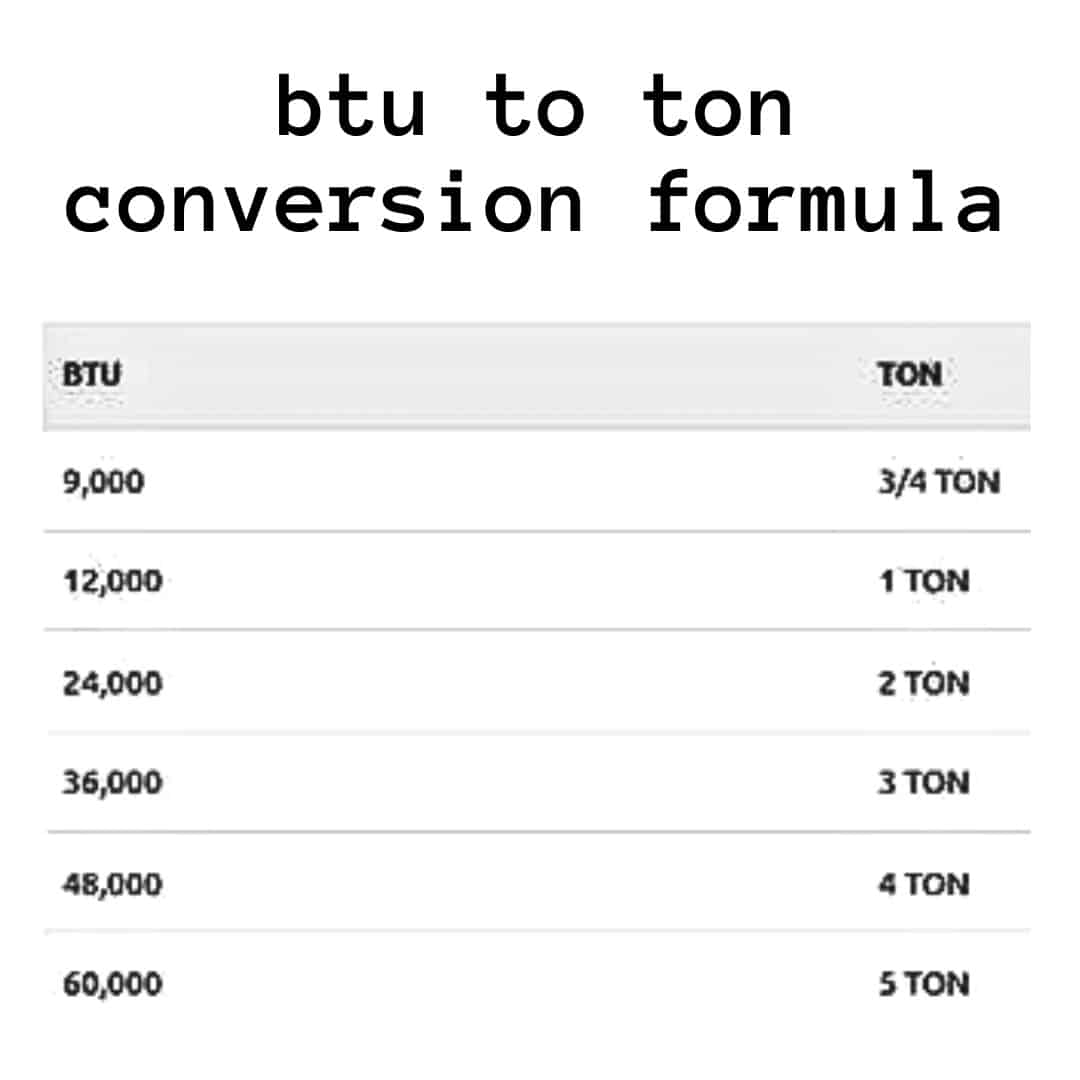Hey there, fellow homeowner or HVAC enthusiast! Have you ever found yourself puzzled by the term ‘BTU‘ while searching for the perfect air conditioner? Today, we’re cracking the mystery behind BTU. Why it’s a term you should not only know but understand deeply, especially when in the market for a new air conditioner.
Just what exactly does BTU mean, and why does it sound like something you’d hear in a science class rather than when hunting for your next home-cooling solution? Well, fear not! We’re about to embark on a journey that breaks down the seemingly complex into digestible, easy-to-understand pieces. You’ll soon be tossing around ‘BTUs’ in conversation as casually as you discuss weekend plans with friends.
Whether you’re installing a new air conditioning system from scratch, upgrading an old unit, or simply curious about how you can optimize your home’s cooling, grasping the concept of BTU is essential. It’s not just technical jargon; it’s the key to ensuring your sanctuary becomes the cool haven you need it to be. Understanding BTUs means optimizing comfort, efficiency, and, yes, even saving some of your hard-earned cash in the long run. Intrigued? You should be!
What does BTU stand for?
First off, let’s break down those three letters that are critical in the world of HVAC – BTU stands for British Thermal Unit.
Imagine it as a unit of heat, just like you’d measure water in gallons or distance in miles. Specifically, one BTU is the amount of energy needed to heat (or cool) one pound of water by one degree Fahrenheit. It’s the cornerstone of understanding the potency of your cooling (or heating) systems.
It’s a measure of heat energy, and that’s the “thermal unit” part of BTU. The “British” part comes from the use of the imperial gallon in the calculation.
How is the imperial gallon used?
Well, an imperial gallon of water weighs 10 pounds. A BTU heats one-tenth of this, or one pound of water, one degree Fahrenheit. This is an older system of measurement that has been replaced in the metric system, but BTU is still used in the HVAC field.
Just as you have to add one BTU to a pound of water to raise the temperature one degree F, you could also take away one BTU and lower the temperature by one degree. It’s all about moving heat energy around.
For BTU in air conditioner, we aren’t changing the temperature of water, but of air. But the idea remains the same.
What BTU Mean in Air Conditioner
Now, you might be thinking, “Why should I care about BTUs when all I want is for my room to stay cool and comfortable?“
Well, here’s the kicker! The number of BTUs in an air conditioner indicates its power to cool your space. It’s like knowing how fast a car can go just by looking at its horsepower. The right BTU count means your room will become the oasis you need on a sweltering day. Too high or too low, and you’ll be either freezing like a penguin or sweating like you’re in a sauna!
When comparing air conditioner systems, the BTU is a handy measure. There is a catch, though. In HVAC, we aren’t just interested in BTU but how many BTUs can be exchanged in some set time. Although you will see equipment rated by BTU, we usually mean BTU/h (per hour).
When buying a new air conditioner for your home, it is important to choose the size correctly. Sizing an air conditioner means choosing the BTU rating. An air conditioner needs about 20 BTUs for each square foot to cool. To get an approximate idea of how many BTUs you need, multiply the square footage of your space by 20.
How Many BTUs Do I Need?
Determining how many BTUs you need for your space is crucial for comfort and efficiency. Here’s a simplified guide to help you understand the requirements. However, for a precise assessment, it’s always best to consult with an HVAC professional. They can consider all the unique aspects of your environment, which DIY calculations might miss.
Step 1: Calculate the Area of Your Space
First, you need to know the square footage of the room or rooms to be cooled. To calculate this, simply multiply the room’s length by its width. For instance, if your room is 20 feet long and 15 feet wide, you’d calculate it as follows:
20 feet (length) x 15 feet (width) = 300 square feet
Step 2: Understand the Basic BTU Requirements
As a rule of thumb, an area of 100 to 150 square feet will need about 5,000 BTUs per hour. The requirement increases as the area becomes larger. Here’s a general breakdown:
- 150 to 250 square feet: Require around 6,000 BTUs
- 250 to 300 square feet: Require around 7,000 BTUs
- 300 to 350 square feet: Require around 8,000 BTUs
- 350 to 400 square feet: Require around 9,000 BTUs
- 400 to 450 square feet: Require around 10,000 BTUs
… and so on. The pattern continues proportionally, adjusting based on room size.
This BTU chart gives you a rough guide to follow based on square footage.
| Room Square Footage | BTUs Needed |
|---|---|
| 100-150 | 5,000 |
| 150-250 | 6,000 |
| 250-300 | 7,000 |
| 300-350 | 8,000 |
| 350-400 | 9,000 |
| 400-450 | 10,000 |
| 450-500 | 12,000 |
| 500-700 | 14,000 |
| 700-1,000 | 18,000 |
| 1,000-1,200 | 21,000 |
| 1,200-1,400 | 23,000 |
| 1,400-1,500 | 24,000 |
| 1,500-2,000 | 30,000 |
| 2,000-2,500 | 34,000 |
Step 3: Consider Other Factors Affecting Cooling Needs
The above are base values, but several factors can require these numbers to be adjusted. These include:
- Room Height: If your ceilings are significantly higher than the standard 8 feet, you might need more cooling power.
- Sunlight Exposure: Rooms with substantial sunlight exposure often need more cooling (an additional 10% more BTUs if it’s very sunny). In contrast, if the room is heavily shaded, you might need fewer BTUs (around 10% less).
- Occupancy: If more than two people regularly occupy the room, add 600 BTUs for each additional person.
- Kitchen Location: If you’re cooling a kitchen, an additional 4,000 BTUs is generally recommended.
- Electronics: If the room houses heat-generating appliances or electronics, more cooling power may be necessary.
Step 4: Make the BTU Calculation
Using the base requirement from Step 2, adjust the needed BTUs based on your room’s specific conditions as outlined in Step 3.
Example:
Here’s a practical example using our initial 300 square feet room:
- Base BTUs: Let’s say it’s around 8,000 BTUs (from our general guide).
- It’s a sunny room, so we may need an additional 10%: 800 BTUs.
- Four people regularly use the room, so add 1,200 BTUs (600 BTUs per additional person beyond the first two).
- The room is not a kitchen, and no significant extra heat-generating appliances are around.
The total estimated BTUs for this room would be:
8,000 BTUs (base) + 800 BTUs (sunlight) + 1,200 BTUs (extra people) = 10,000 BTUs
This process provides a rough estimate. Remember, each situation varies, and other factors might come into play.
Therefore, it’s advisable to have a professional assessment for the most accurate calculation. They will do a thorough evaluation, sometimes referred to as a “Manual J calculation,” which considers all variables, including insulation, window types, local climate, and more, ensuring optimal comfort and efficiency.
How Many BTUs in A Ton
The term “ton” in relation to air conditioning or heating is a measure of the system’s capacity to cool or heat an area. It originates from the amount of energy required to melt one ton of ice in 24 hours. This concept is a standard measurement used in the HVAC industry to simplify capacity figures.
Central AC units are generally use tonnage as a measurement instead of BTU. To convert between the two; 1 ton = 12,000 BTU/hr.

Here’s the BTU to Ton conversion:
1 ton of cooling capacity = 12,000 British Thermal Units (BTUs) per hour.
So, for instance:
- A 1-ton air conditioner has a cooling capacity equivalent to 12,000 BTUs per hour.
- A 2-ton unit would be 24,000 BTUs per hour.
- A 3-ton unit would be 36,000 BTUs per hour, and so forth.
This measurement helps in matching the capacity of an air conditioning system to the requirements of the space based on factors like size, design, insulation, climate, and more. HVAC professionals often use these figures in their calculations when planning installations to ensure efficient and effective heating and cooling.
Are BTU Measurements Really Accurate?
For residential applications or when comparing different types of air conditioners, they are a good yardstick. However, technically, they are not accurate. The reason is that many other elements influence how hot or cold the results will be.
For example, temperature changes faster when there is a great difference between hot and cold. Your hot coffee will cool faster at first and then more slowly as it approaches room temperature. Airflow is also a consideration – if cool air doesn’t circulate well, “hot spots” will resist temperature changes.
For larger commercial installations, the air exchange rate, mass volume, and humidity all come into play. Humidity changes both how efficiently air can be cooled as well as our perception of temperature.
Conclusion
BTUs are an essential factor in choosing the best air conditioner that will fit your needs. Be sure to check out the BTU rating and do some quick calculations to figure out if it is right for you. If you need help deciding the right system for your home, get free quotes from your local HVAC technician, who can help you understand the kind of system that’s right for your home.
So, are BTUs the be-all and end-all in air conditioning? In many ways, yes! Understanding BTUs is your ticket to a comfortable, relaxing indoor environment during those hot summer months. It’s not just about getting the biggest unit out there or picking the one that saves the most energy. It’s about the right fit for your space, your comfort needs, and, of course, your pocket. Next time you’re on the hunt for a new AC, remember BTU is your friend, guiding you to the ultimate cooling treasure!






